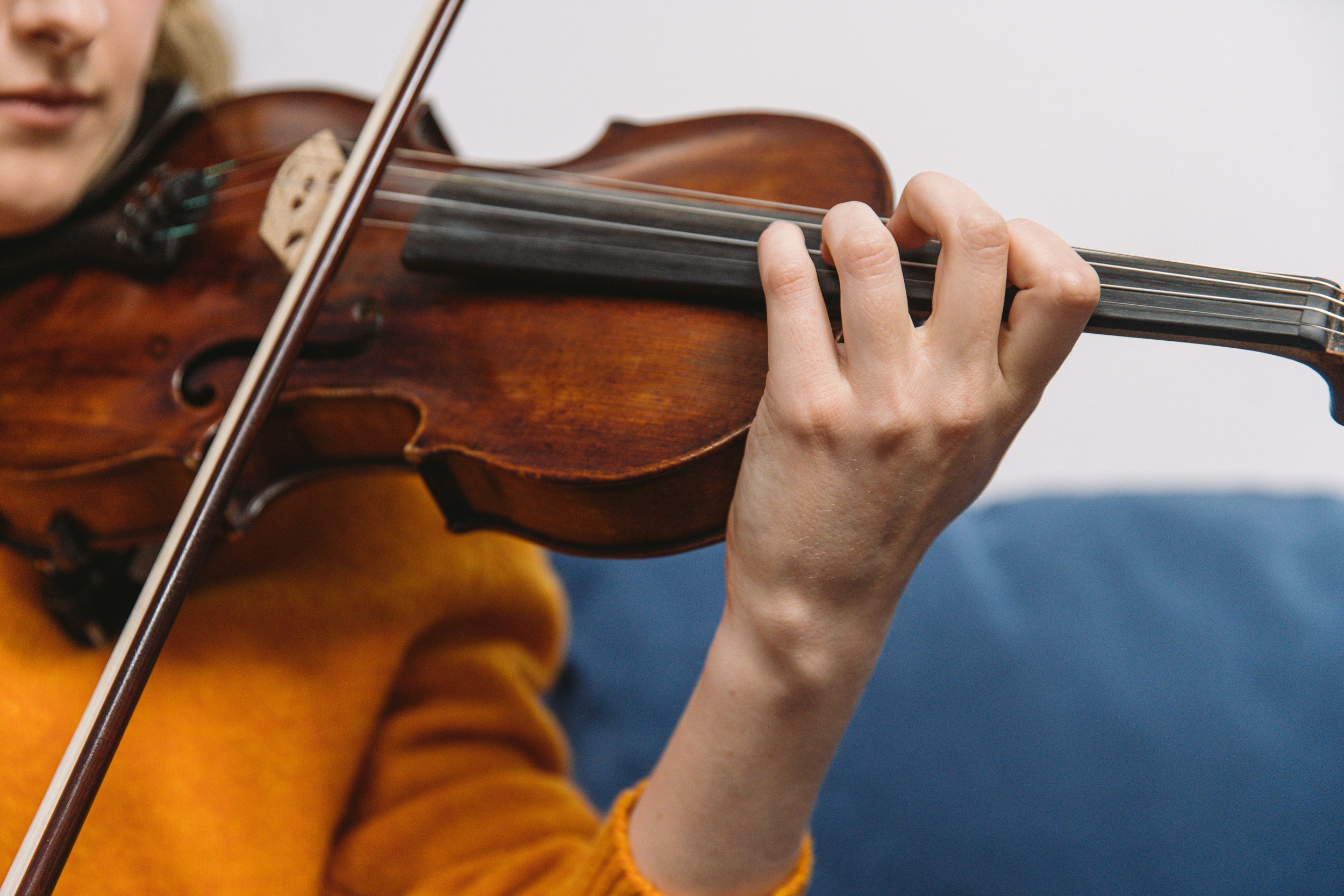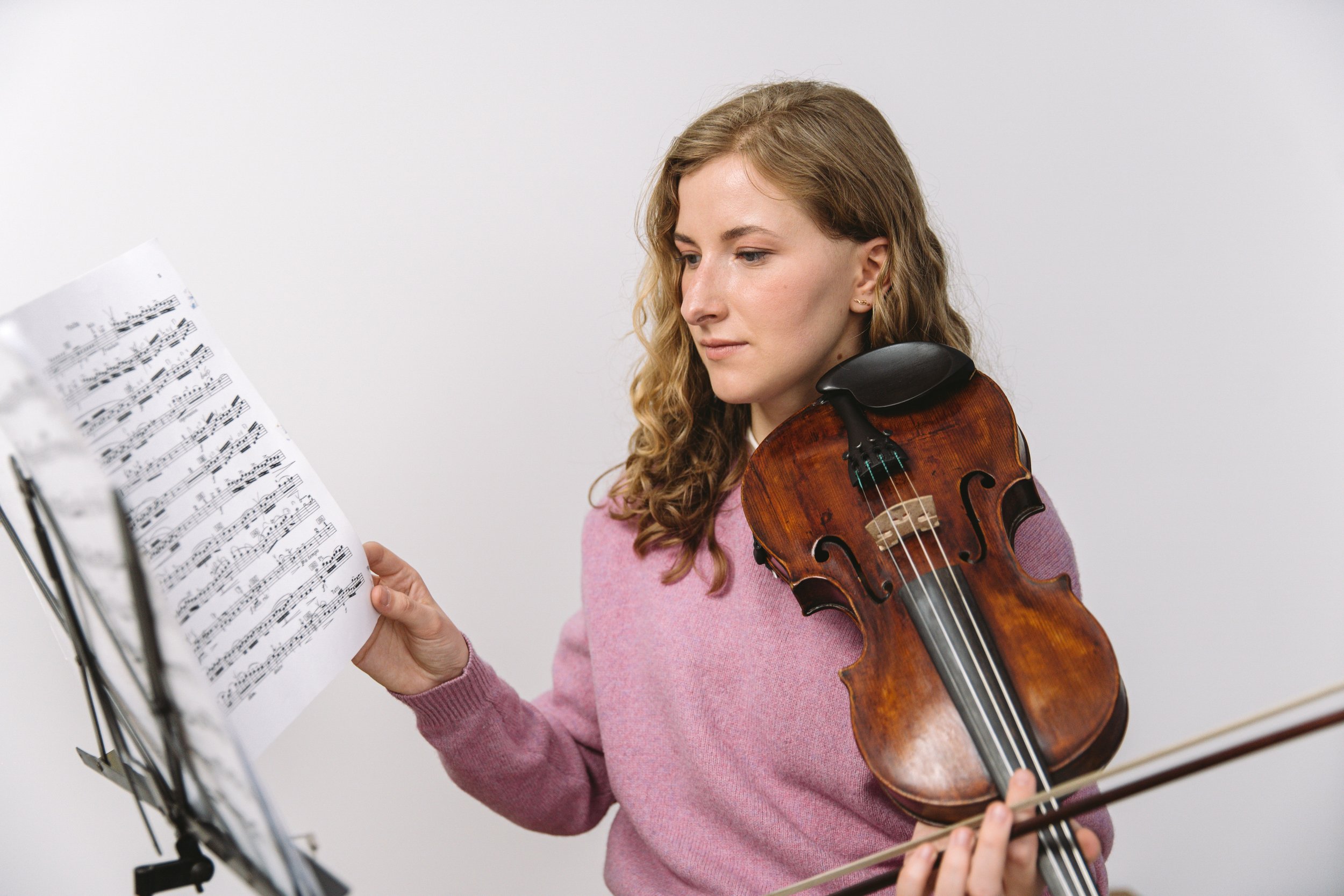Violin Scales 101: Creative ideas to practice
Listen via Apple Podcasts, Spotify, Stitcher, iHeartRadio, or wherever you get your podcasts.
How to make your violin scales practice more interesting
If you've ever caught yourself, mindlessly playing through your scales in the beginning of your violin practice because it's something that you know that you're supposed to do, but you don't find it very enjoyable, then you're really missing out on something.
Scales are actually one of our most important and effective practice tools that we have in our arsenal as violinists. I'm going to give you some fresh and creative ideas for how to practice, them as well as give you context as to why they're important.
If you try some of these out, I guarantee you that you're going to find a practicing risk scales to be a lot more interesting, and dare I say fun.
Sales get a bad rap for being really monotonous, kind of like eating green vegetables. It's just something that you need to do in order to become a good violin player. But if we're not playing our scales intentionally, if we're not rotating through them and practicing them in new and different, fresh, interesting ways, I think that we're missing a lot of the benefits that we get from practicing violin scales.
But first, let’s look at some of the reasons why scales are worth your time and why you should spend a little bit of practice time on them each session.
Giving scales context in your violin practice
What is a scale?
A scale is just a building block for almost any piece of music that we play. It's a pattern of consecutive notes that are organized in different combinations of half steps and whole steps going up and down, and we'll find them present in almost any repertoire that we play as violinists.
How to practice scales
A good rule of thumb for switching up your warmup routine is to switch out your scale every week and then focus on practicing a different technical skill every two to three practice session.
I cover the context of how to structure your overall technique practice, and where scales should fit in my Violin Warmups Guide
Types of violin scales
As a violinist, you may have heard of major and minor scales in Western classical music.
We actually have a lot more than that— chromatic scales, whole tone, all the modal scales. And as soon as you leave the classical tradition, we have our jazz scales and we have scales of all different cultures and traditions that have a different sound.
We’re going to just be focusing on the major and minor for the purpose of our analysis. So, as I mentioned, scales are the building block of almost all music that we play.
Let's pull out some examples from the classical repertoire to take a look at this in context.
Examples of scales in the classical violin repertoire
When I think of scales in a piece of music, the first thing that comes to mind for me as a violinist is the Beethoven violin concerto.
Beethoven Violin Concerto - so many scales!
Listen to this section of the concerto.
In the violin world, the Beethoven Violin Concerto is famous for being full of scales. The violinist just goes up and down for pages on end.
If you have a good foundation for your scales, and if that's something that you practiced for years before getting to this concerto, it can be pretty straightforward (not easy— just straightforward!)
But if you don't have that foundation, you are going to struggle every step of the way.
The passages go by very fast in this piece, so we can use our scales practice to build up the tempo.
Bruch Violin Concerto - a more subtle example
Although this part is a much more lyrical and slow than the Beethoven, It's still just a scale: the composer has just added some trills to every note and a beautiful orchestral accompaniment.
But again, a scale is just a consecutive pattern of notes, and that's all that the violinist here is playing just embellished in different and interesting ways.
With that context in mind, here is how we can use scales to improve our violin playing.
Improve your violin playing through scales - practical ideas
A tool for reinforcing technique
Say that you're a beginner violinist and you just started learning slurs.
Practicing your scales with slurs is it going to be a great way of reinforcing that technique and observing them in all different situations, in different keys. That way, when you need it in a piece, you've already looked at those patterns with the slurs.
So with my example of slurs, let's take a look at different ways that we can start working on:
Slurs of 2
Slurs of 3
Slurs of 4
Slurs of 5
Slurs of 6
Slurs of 7
Slurs of 8…
From there, you can alternate with separate bows:
Slurs of 2, separate 2
Slurs of 3, separate 3
etc…
And then with different articulations
Slurs of 2, separate 2 with a martele bow
Slurs of 3, separate 3 with a martele bow
etc…
Scales to push our violin technique
Whenever we're trying to break down a piece of music to learn, we want to make the music harder in order to make it easier. That means is we like to create these little puzzles for ourselves when we're practicing violin— practice the music in such a way that it’s just a bit harder than we need it to be for the repertoire.
Increasing tempo through scales
Now, let’s look at a really simple example: say you have to learn a measure at 60 beats per minute of 16th notes.
If I want it to be really confident in playing at that speed, I would actually try to push myself to play faster: say around 72 beats per minute.
If I can consistently play it at 72 beats per minute, going back to 60 beats per minute is going to be a breeze. And it's something that we can practice on our scales as well.
If I can only play my piece at 50 bpm, I’d work on building tempo over a few days or weeks in increments of 3:
50bpm
53 bpm
56 bpm
59 bpm
62 bpm
65 bpm
68 bpm
71 bpm
72 bpm
After I can confidently play at 72, going back to 62 will feel effortless.
Improving musicality through scales
Scales are not just a tool for improving our technique- they can be a model to working on improving our sense of musicality. And yes— musicality is something that can absolutely be worked on, improved, and practiced.
A scales exercise to try during your violin practice
Think of three different moods or emotions.
Here are some ideas to get you started:
Fearful
Angry
Surprised
Disgusted
Timid
Proud
Then, brainstorm a few ways that you can bring those emotions out with the violin.
We’ll take an example with “happy”
Lively tempo
Mezzo-forte
Energetic sound in the string
Let's contrast this with now feeling sad.
Slower tempo
More connected sound
Mezzo-piano
Lastly, try to create that feeling just through a scale.
Challenge yourself to make the same scale sound three different ways just by changing some of those technical parameters. Practicing this way gives you an opportunity to express yourself just through those consecutive patterns of notes.
If you want to hear my interpretations of these examples, listen to the Creative Scales episode of Violin Class podcast:
Applying expressive scales to your practice
The more you do this, the more it's going to come naturally to you.
Furthermore, that's also going to give you a process when you're breaking down a line that you're working on or a piece of music.
You can use the same exercise: what are the parameters that we can use as violinist to express this particular emotion?
Practice your scales!
I hope that I've convinced you that scales are important and I've given you a few ideas to try when you're practicing them.
Whether you're focusing solely on the technical abilities and pushing yourself to be able to play more fluidly and smoothly by making music harder in order to make it easier.
If you’re using scales as a tool of musical expression, you're going to have a really effective way of not only warming up, but practicing your violin and becoming a more expressive musician
You may also like
Is it me or my violin? Troubleshooting unpleasant sounds
Advice from an adult violin student
The #1 thing you should be doing outside of practice to improve your playing


